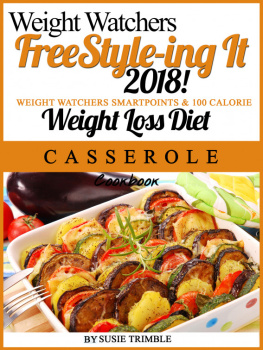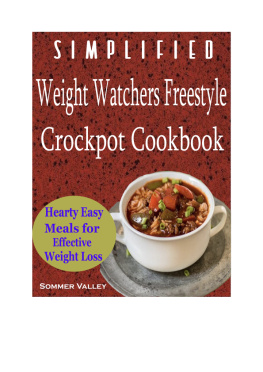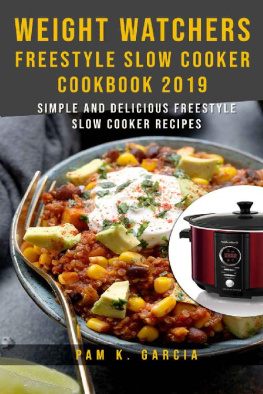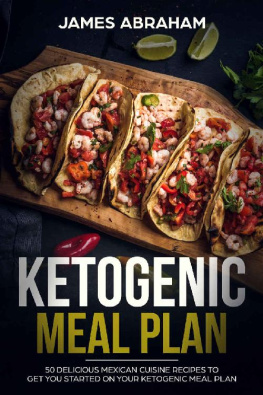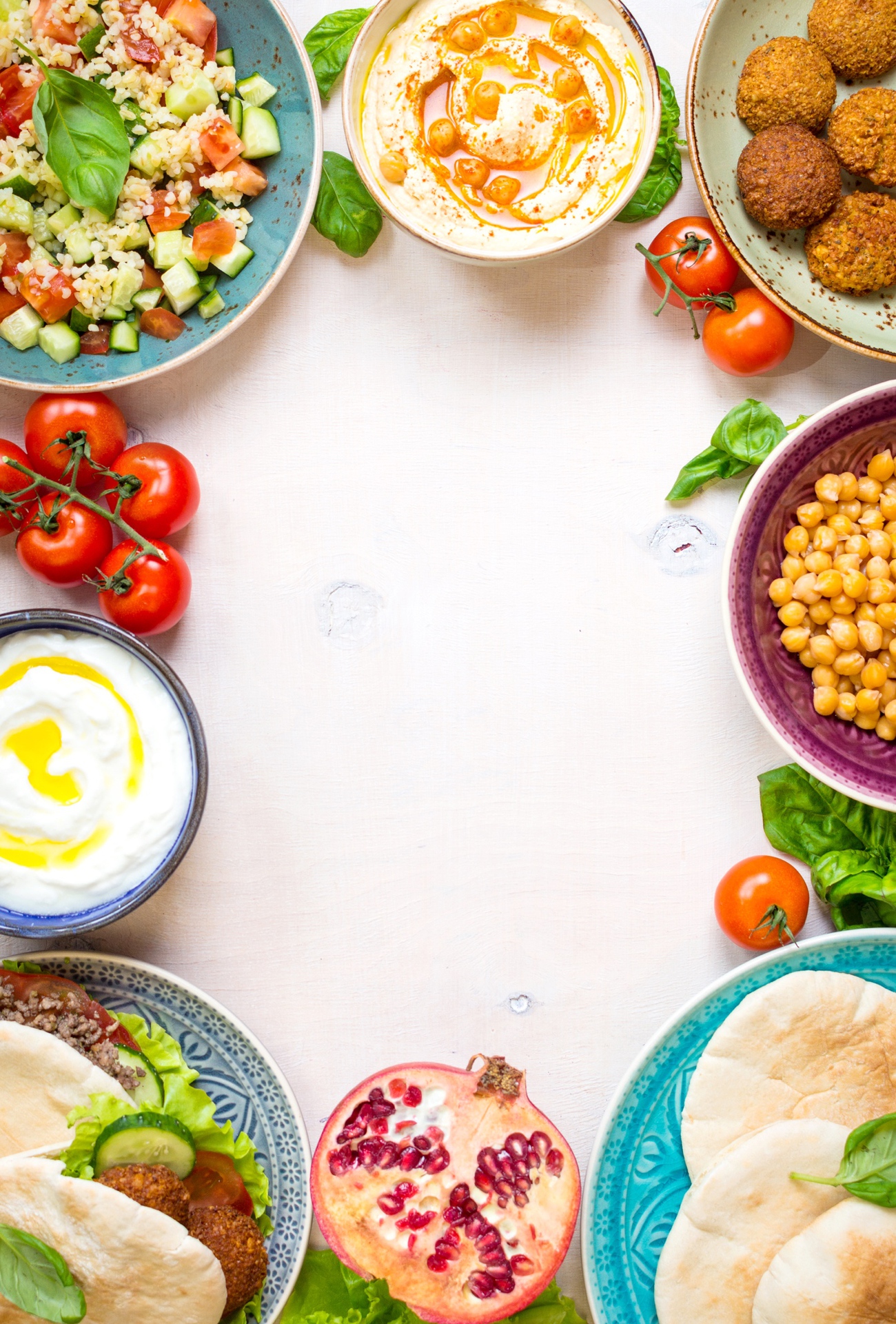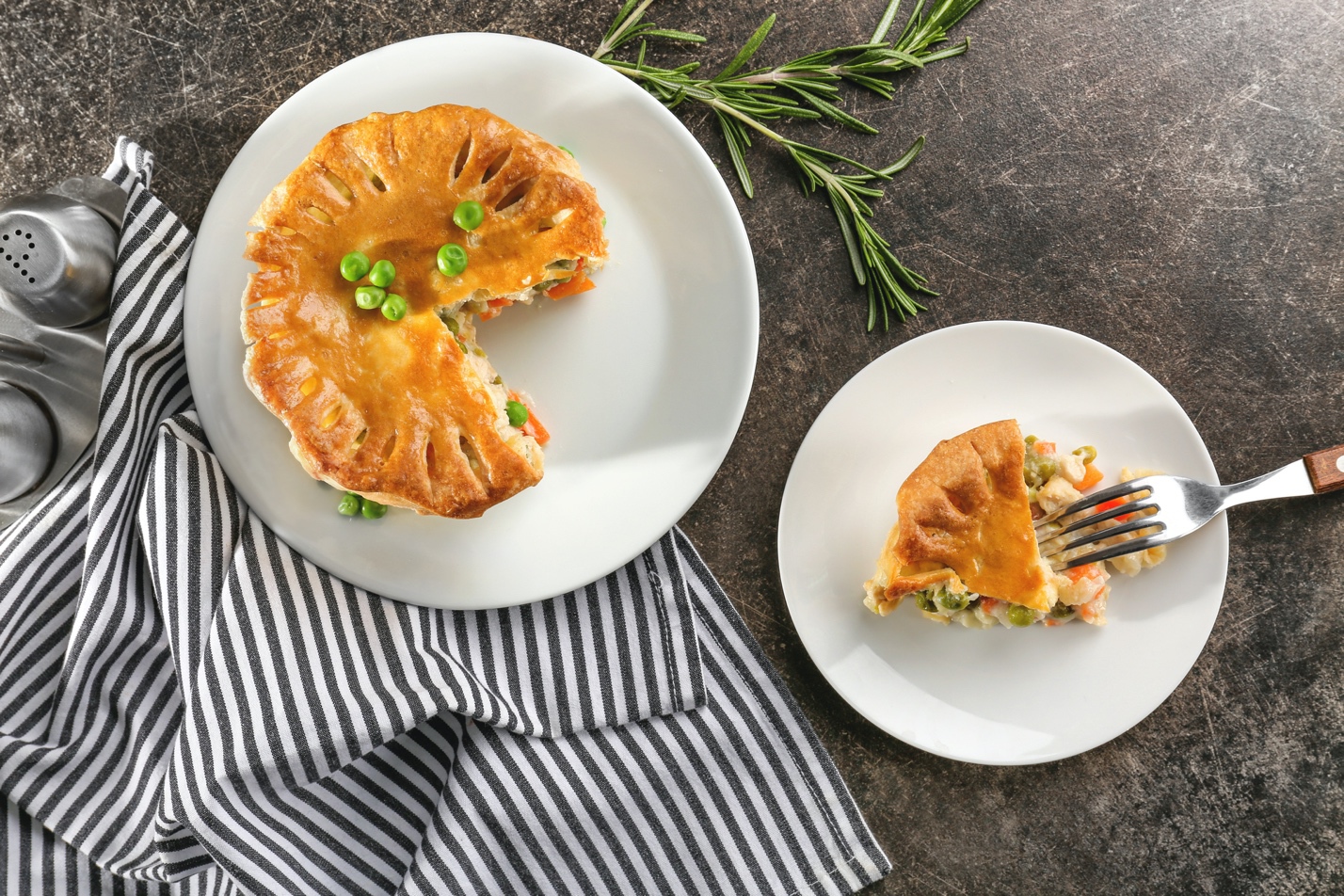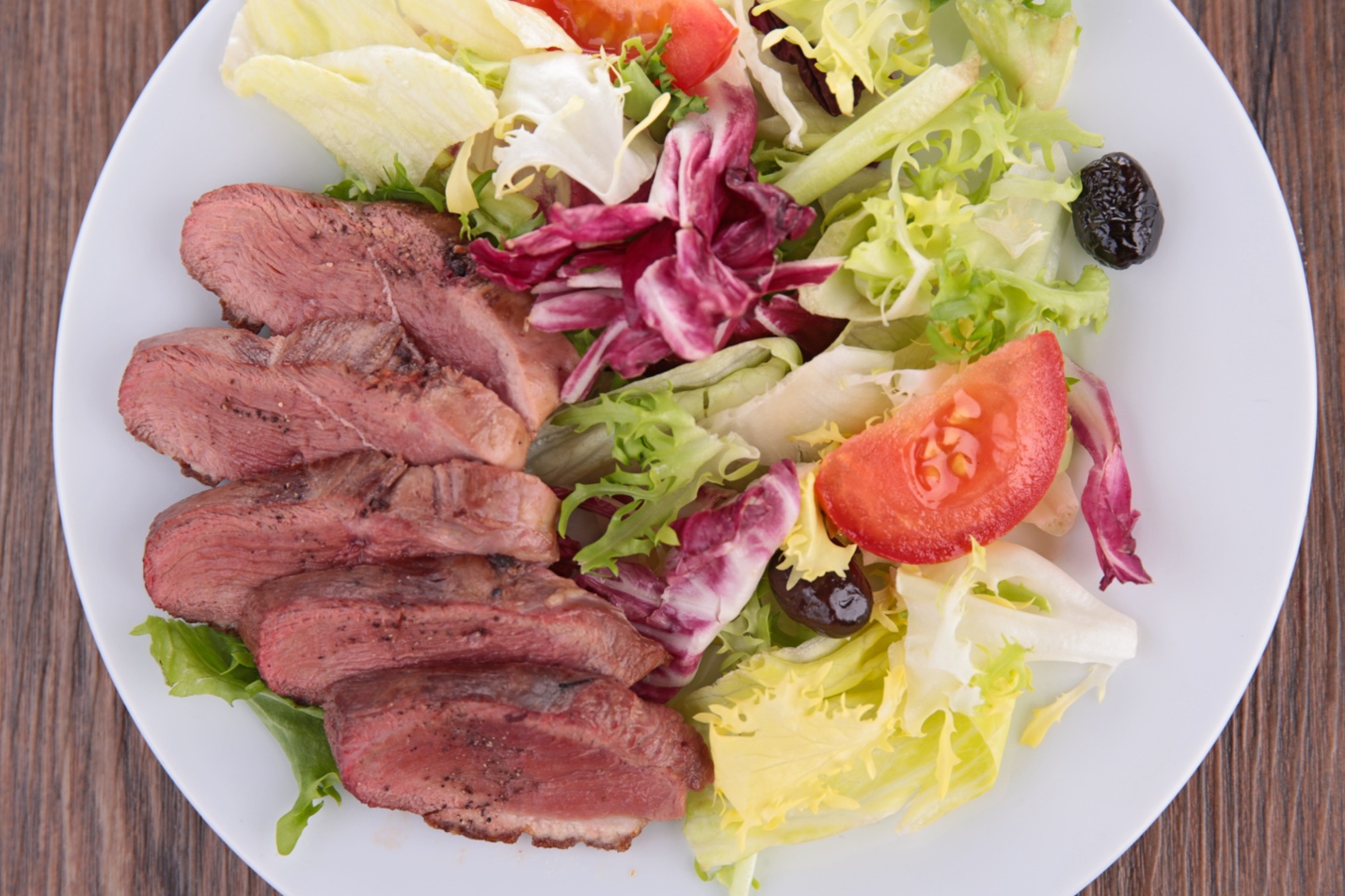WEIGHT WATCHERS
BY LILIA ROSE
Copyright 2020 - All rights reserved.
This document is geared towards providing exact and reliable information in regards to the topic and issue covered. The publication is sold with the idea that the publisher is not required to render accounting, officially permitted, or otherwise, qualified services. If advice is necessary, legal or professional, a practiced individual in the profession should be ordered.
From a Declaration of Principles which was accepted and approved equally by a Committee of the American Bar Association and a Committee of Publishers and Associations.
In no way is it legal to reproduce, duplicate, or transmit any part of this document in either electronic means or in printed format. Recording of this publication is strictly prohibited and any storage of this document is not allowed unless with written permission from the publisher. All rights reserved.
The information provided herein is stated to be truthful and consistent, in that any liability, in terms of inattention or otherwise, by any usage or abuse of any policies, processes, or directions contained within is the solitary and utter responsibility of the recipient reader. Under no circumstances will any legal responsibility or blame be held against the publisher for any reparation, damages, or monetary loss due to the information herein, either directly or indirectly.
Respective authors own all copyrights not held by the publisher.
The information herein is offered for informational purposes solely, and is universal as so. The presentation of the information is without contract or any type of guarantee assurance.
The trademarks that are used are without any consent, and the publication of the trademark is without permission or backing by the trademark owner. All trademarks and brands within this book are for clarifying purposes only and are the owned by the owners themselves, not affiliated with this document.
TABLE OF CONTENTS
The Original Coleslaw
Roasted Tomato Soup
CHAPTER 1: WEIGHT WATCHERS FREESTYLE DIET
Struggling to lose weight is not a new phenomenon. Millions of people around the world are suffering from life-disrupting obesity and unwanted weight gain. Such unwanted weight gain is not restricted to the only increase of overall body weight as it affects our overall health leading to many critical health disorders including high blood pressure, immune-compromised state of health, poor heart health, increased risk of diabetes, and lack of energy.
There are hundreds of diets and health plans claiming to support weight loss goals. However, most of them demand complex diet management to calculate ingredients, portions, etc. Many such diets are a fad, which never helps in the first place and many of their practices are also not healthy for our body.
As a result, people often find such measures unfair and find them challenging to stay on a diet. It leaves people wondering the reason behind failure to achieve weight loss results and end up feeling frustrated, agitated and disappointed.
WHAT IS THE DIET?
A Freestyle diet, also popularly known as Weight Watchers program, is the brainchild of Jean Nidetch. The diet was invented in 1963 with the aim of delivering steady weight loss results by making healthy dietary changes. Initially, the diet was based on calculating calories, while it has been simplified by changing it to a point-based program in the 90s. The diet is a systematic programme based on scientific & dilatory methods.
A Freestyle diet is a modern diet form that emphasizing on removing unnecessary diet restrictions and make it as simple as possible for people to understand the food. The menu, also known as Weight Watchers diet, is more of a way of living that actual diet form. The intake is centralized on following a point based system; it has many names including SmartPoints, Freestyle points, etc.
Freestyle, as the name suggests, is a diet that promotes more freedom to eat foods that you like. It spares you from being always conscious of each ingredient used in the preparation of your everyday meals. The diet has shown results for people, and that is the reason for its ever-growing popularity to follow a simple menu without many technicalities. The Weight Watcher Freestyle program focuses on removing the complexities of determining calorie intake and including recipes prepared from a smart combination of ingredients that can provide optimum nutritional benefits.
HOW WEIGHT WATCHERS DIET WORKS?
Weight Watchers is not a diet plan as it is more based on keeping in mind the allotted SmartPoints for the recipe you want to eat for breakfast, lunch or dinner. Each recipe of any kind is been given a value point, SmartPoints, based on the ingredients used in it. The diet helps in achieving steady progress that can provide long-term, sustainable results to improve holistic health. One great thing about the diet is that it does not ask you to give up on your favourite foods and indulge in a strenuous exercise regime. It is more of adopting a smart approach to manage your meals that does not lead to weight gain and helps to improve your overall fitness level.
The key is to manage your diet by controlling food intake and making smart decisions without harming your body. The menu has gone through many updates, and each new updates adds more and more food lists that can be consumed without any guilt. You are given points to consume every day (explained in details in the following section) and many recipes with zero points that are based on healthy vegetables and fruits. The focus is on staying within the SmartPoints limit to achieve desired goals. It includes recipes that take care of your protein requirements that are based on pork, beef, lamb, poultry, and chicken.
Weight Watchers program also takes into account your age, weight, gender, and height to create a custom meal plan. However, the basics of the program remain the same as following the point based system.
WHAT ARE FREESTYLE POINTS?
Our calorie intake is essential as it plays a vital role in determining our weight and its a key factor to control weight gain. As mentioned earlier, the Freestyle diet does not expect people to follow the cumbersome task of calculating calories. The diet does all such cumbersome calculations and allow a specific SmartPoint based on included ingredients.
SmartPoints for a particular recipe varies from 0 to 10 points. For example, a breakfast recipe Cheese Tomato Omelet is awarded 4 SmartPoints and similarly, each method is given such points. SmartPoint is a simple number that is being determined by protein, carbohydrates, saturated fats, fibers, and calories of included ingredients. Healthier is the meal; lower is its allotted SmartPoints. Food with zero SmartPoints do not need any tracking or measuring as they are free to consume.
Consider this is like a recipe buffet, where you have to make smart decisions of combining all recipes for the whole day. The previous version of the diet used to allow a maximum of 30 SmartPoints consumption per day. The latest version has updated it to a 23 maximum SmartPoint consumption per day. That way, all you need to consider is keeping the total tally of SmartPoints less than or equal to 23 for all meals of a given day.



